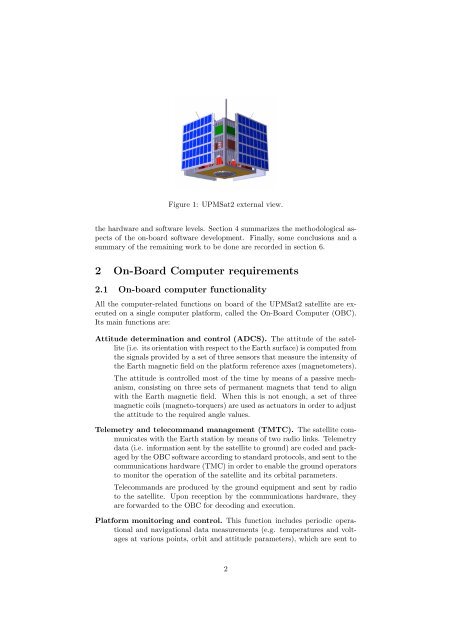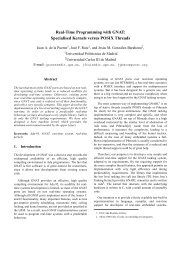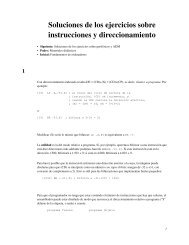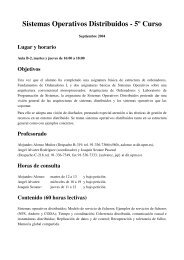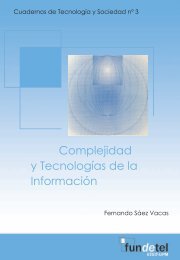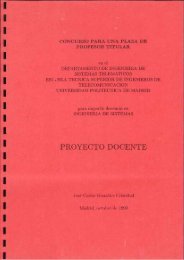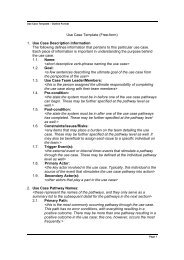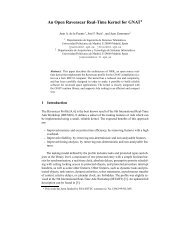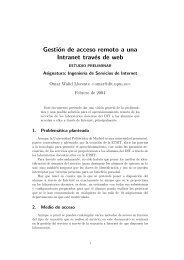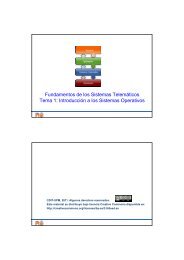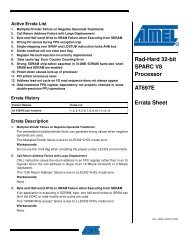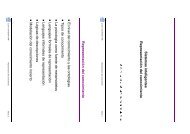A Real-Time Computer Control Platform for an Experimental ... - CTR
A Real-Time Computer Control Platform for an Experimental ... - CTR
A Real-Time Computer Control Platform for an Experimental ... - CTR
You also want an ePaper? Increase the reach of your titles
YUMPU automatically turns print PDFs into web optimized ePapers that Google loves.
Figure 1: UPMSat2 external view.the hardware <strong>an</strong>d software levels. Section 4 summarizes the methodological aspectsof the on-board software development. Finally, some conclusions <strong>an</strong>d asummary of the remaining work to be done are recorded in section 6.2 On-Board <strong>Computer</strong> requirements2.1 On-board computer functionalityAll the computer-related functions on board of the UPMSat2 satellite are executedon a single computer plat<strong>for</strong>m, called the On-Board <strong>Computer</strong> (OBC).Its main functions are:Attitude determination <strong>an</strong>d control (ADCS). The attitude of the satellite(i.e. its orientation with respect to the Earth surface) is computed fromthe signals provided by a set of three sensors that measure the intensity ofthe Earth magnetic field on the plat<strong>for</strong>m reference axes (magnetometers).The attitude is controlled most of the time by me<strong>an</strong>s of a passive mech<strong>an</strong>ism,consisting on three sets of perm<strong>an</strong>ent magnets that tend to alignwith the Earth magnetic field. When this is not enough, a set of threemagnetic coils (magneto-torquers) are used as actuators in order to adjustthe attitude to the required <strong>an</strong>gle values.Telemetry <strong>an</strong>d telecomm<strong>an</strong>d m<strong>an</strong>agement (TMTC). The satellite communicateswith the Earth station by me<strong>an</strong>s of two radio links. Telemetrydata (i.e. in<strong>for</strong>mation sent by the satellite to ground) are coded <strong>an</strong>d packagedby the OBC software according to st<strong>an</strong>dard protocols, <strong>an</strong>d sent to thecommunications hardware (TMC) in order to enable the ground operatorsto monitor the operation of the satellite <strong>an</strong>d its orbital parameters.Telecomm<strong>an</strong>ds are produced by the ground equipment <strong>an</strong>d sent by radioto the satellite. Upon reception by the communications hardware, theyare <strong>for</strong>warded to the OBC <strong>for</strong> decoding <strong>an</strong>d execution.<strong>Plat<strong>for</strong>m</strong> monitoring <strong>an</strong>d control. This function includes periodic operational<strong>an</strong>d navigational data measurements (e.g. temperatures <strong>an</strong>d voltagesat various points, orbit <strong>an</strong>d attitude parameters), which are sent to2


